Learn How Red Wine is Made According to an Experienced Winemaker
After harvest and crush, when the sweet juice of the fruit of the season is at long last captured, the real winemaking begins. Now that the grapes have given up their treasure, winemakers have some choices to make.
Crushing The Grapes
Let’s start with the crush. Here, in the shaded confines of the winemaker’s lair, cellar work and decisions start with grapes that arrived from harvest and went through destemming (or not), maceration (generally on the skins), and the must (juice + skins) is ready for it’s first one on one encounter with its (wine)maker.
Red wine, by its nature, is produced with skin contact. Indeed, red wine is red primarily due to its contact with the skin+seed+stem material collectively known as pomace. Thanks to Ribereau-Gayon (1998) we have this handy definition:
“[r]ed wine is a macerated wine. The extraction of solids from grapes clusters (specifically skins, seeds and possibly stems) accompanies the alcoholic fermentation of the juice. The length and intensity of maceration are adjusted according to grape variety and types of wine desired.”
For the handful of people thinking about teinturier grapes (red grapes with red flesh), these naturally occurring wonders require skin contact to acquire tannin. But you’re the best kind of wine geek, thanks for being here.
Red winemaking breaks out into handy steps:
- Before fermentation processing
- Fermentation
- Pressing
- Malolactic Fermentation
- Maturation
Before fermentation, with these freshly harvested grapes, grapes commonly undergo destemming and crushing. Destemming removes grapes from their stems. The stems of some grapes, when fully ripe, can provide tasty, beneficial tannins. However, unripe stems taste bitter and are best left off. Stems also tend to have a diluting effect on tannin and color when included in the maceration, and slow fermentation (the increase of textural diversity increases the interplay of oxygen in the pre-wine mash, which slows everything down at this stage).
RELATED: How White Wine is Made: The White Wine Production Process
Modern destemming machines are essentially large, perforated, horizontal cylinders that operate on a sieve principle like coin-separating machines. Holes are big enough for grapes to pass through, leaving the newly naked stems tumbling inside until they exit the tube. The cylinder rotates, grapes pass through the holes to be collected and stems funnel out the end.
Liberated grapes make their way to fermentation vessels (gravity or pumps help them along). The transit aids in the gentle crushing of the grapes, encouraging them to release their juices and mingle in the vats.
*One moment for the obvious exception to this part of red winemaking: whole bunch fermentation. For much of history, the cumbersome process of destemming by hand would have made whole bunch pressing and whole bunch fermentation the time-saving choice. These light, aromatic, fruit-forward wines undergo a different form of fermentation (carbonic maceration), which is a topic for later. For now, most red wines produced go through the destemming process.
After destemming, when the mass to ferment is in its designated fermentation vessel, most winemakers add a bit of sulfur dioxide to save us from mysterious wild yeasts pre-emptively starting the ferment. This also saves the must from bacteria and oxygen-loving enzymes.
Winemakers can adjust acidity and sugar content levels at this stage. (*Void where prohibited, some regions in winemaking’s Old-World regions have strict regulations regarding the adjustment of almost-wine.)
Cold Soaking
The soon-to-be-wine must enter a phase of concentration. The must is cooled to about 60°F (15°C) so that the skins have added time to release their color compounds to the mass before the wild ride of fermentation. It’s a bit like making iced coffee, the cool temperatures allow for a slow and steady release of these chemical compounds without the harmful breakage that can occur with overheating. Cold soaking, as it is called, can last from a few days to a week or so. While not a universal practice, where high color intensity and stability are key to a wine’s style, the process is invaluable.
Fermentation
The wine is chilling in its fermentation vessel, soaking out some color. And then, the party begins.
The party house, or fermentation vessel, comes in a variety of materials. The world and history have given way to a grand variety of tubs, barrels, vats, and tanks in which to ferment wine. Options include wood, stainless steel, fiberglass, and cement vessels in a dizzying array of sizes and configurations. Each has potential and the decision to use any specific style, size, and material depends on the style of wine, cost of production, and the winemaker’s preference.
Regardless of the preferred fermentation vessel, a few things are universal. The first one is fermentation. This is the action of yeast consuming sugar and releasing alcohol, carbon dioxide, and heat as by-products. The chemical notation form of this transaction is:
C6H12O6 → 2 C2H5OH + 2 CO2
Please remain calm. There is no exam. This is just the whittled-down formula for the complex and magical transformation of grape must into delicious wine. Yeast is responsible for this bit of enological magic. Cultivated yeast strains offer up reliability and consistency, which is why most producers opt to inoculate, or dose, their fermenting vats with it. Wild yeast or native yeast ferments offer more character and diversity but do eventually give way to the dominant species of yeast.
Once the yeast gets going, things start to get hot. Well, warm in any case. The fermenting mass of crushed grapes reaches temps of 68°F (20°C) to 90°F (32°C). The higher temperatures take our iced coffee analogy to more of a steeping tea analogy, and the warmth of the mixture allows the grape skins to break down on a cellular level. The breakdown releases color, flavor compounds, and tannin into the mix at greater rates. In a general sense, higher temperatures equate to greater compound release and thus a more tannin and powerful wine. So, where a more delicate wine style awaits at the end, temperature control through fermentation may be key. Style is key and king, here and for the duration of the winemaking process.
Winemaking Caps
Physics for fun! Throughout fermentation, the mangled remnants of grape berries coalesce and rise to the top of the fermentation vessel. Cliques being what they are, this massing of material limits the much-wanted contact between grape skin and fermenting must. This clique earned the title “cap” and managing the cap is one of winemaking’s greatest points of pride. Skin-to-skin contact is crucial. Winemakers achieve this mixing and remixing by use of pump-over, punch down, rack and return, and even submerged cap and rotovinification.
One at a time and slower:
- Pump-over
- Hoses used to pump must under the cap over the top of the cap, thus breaking it down and remixing everything
- Punch down
- A long pole with a paddle is used to manually break and push the cap into the must (nice full body workout)
- Rack and return
- Pump-over but with a pit stop. Must is pumped out from the bottom of the tank into a separate tank. The cap breaks up under its own weight and the must is pumped back in.
- Submerged cap
- Boards placed about mid-depth of the must which captures and holds the cap in suspension. The cap forms…but it is submerged.
- Rotovinification
- The fermentation vessel is a horizontal cylinder, motorized. When the cap forms, the cylinder rolls, and the cap remixes.
Once the winemaker has leeched all the tannin, phenolic compounds, and grape-skin goodness they need for the style of wine, the mass is drained and pressed. For light, easy-drinking red it takes about a week. Full-bodied reds destined to age will spend 3 weeks, and very high-quality vintages can spend a month with skin contact.
Feeling Pressed
The wine is red, tannin and phenolics have their place in the must, and now let’s away with the skins. This is the messy bit. Someone pulls a plug, and the juice just runs out of the fermentation vessel. There are generally hoses and buckets involved, but the first, most willing juice to run is free run juice. This juice is ready, and it’s generally considered the highest quality juice from any harvest.
Next, the spongey mass that is left is gently, delicately pressed. Where basket presses (baskets with screw-down tops) once held sway, red wines are generally subjected to more modern techniques. Inflated bladders have the most precision, allowing winemakers to determine how firmly to press and for how long. Winemaking has a large inventory of equipment which is horizontal cylinders. The press is no different. Think of a horizontal cylinder with an inflatable balloon inside. The grapes are placed into the cylinder, the balloon inflates to press the grapes against the side of the cylinder with a specific amount of pressure. Each subsequent pressing needs to be firmer to squeeze out more juice. This presses out harsher phenolics from the pomace into the wine. As a rule, free-run wine and wine from different pressings are kept separate until quality and taste tests run their course.
Why are we doing this twice?
MLF. ML. Malo. Secondary fermentation. Whatever you call it, please know that it’s not alcoholic fermentation. Malolactic Fermentation is incredibly common in red wines. Indeed, there are some winemakers who would dare you to try and stop it. Lactic Acid Bacteria take malic acid (what makes green apples tart) and convert it to lactic acid (what makes cheese creamy).
Maturation
Let there be wine! Now what?
Now we wait. Maturation marks the point in a wine’s life when it must reflect on the stuff it is made of. In other words, the period of time that wine ages in a cellar before it is bottled plus the time it is aged in the bottle before it goes onto the market for sale. Time from fermentation to bottling depends on the style of wine. Lighter-bodied reds may ponder their existence for a few months. Big reds, like Barolo and Gran Reserva Rioja, can spend several years maturing before release.
Oak is the popular aging vessel for premium red wines. The numerous benefits including slow oxygenation of the wine, smoothing of the tannin structure, improvement of body, and stabilization of tannin and phenolics. Over time acidity softens, tannins combine and fall out of suspension, flavors stabilize, and concentrate.
Aside from oak vessels, oak staves, chips, and oak flavoring are all used to save cost while imparting the flavor for lower-cost wines. Neutral oak vessels are those which have been used previously, and which have given their flavoring compounds to prior vintages and are thus now flavor-neutral to aging wines.
Concrete, stainless steel, and other wood (redwood is still used in California) vessels are common. Stainless steel offers protection to youthful, fruit-forward styles while concrete offers stability and oxygenation to wines with a strong need to soften but not evolve.
The maturation environment, like college, plays a large role in the evolution of any wine. Temperatures should be cool, 50°F (10°C) to 68°F (20°C). Humidity is key for wines aged in oak to keep the wood from drying out. Oxidation and protection from it are crucial to each style of wine.
Oak Aging Red Wine
Oak warrants a lingering glance. Watertight, abundant in the Old-World regions where red wine aging gained prominence and bearing flavors that have a natural symbiotic relationship with wine; it’s a wine lover’s perfect consort. Were one to obsess about the finer points of wine, the species would be a fun place to meander.
Barrels made from oak (be it French, Hungarian, Slovenian, Portuguese, or American) benefit from the wood’s natural suppleness and watertight characteristics. All oak barrels are made from staves that are dried and bent using heat. The barrel interior is toasted to help shape the vessel and remove any remnants (sap) of the living tree. Toasting degrades the surface of the wood, bringing to bear the wood’s aromatic character which impacts wine during maturation.
Toasted barrels, like bread, come in varying degrees of char. The heat of the fire in combination with the length of time heat is applied results in light, medium, and heavy toast levels. Imprecise as the terms are, the moral of the lesson here is that more toast = more oaky flavors in the end wine. Too little toast and the wines taste sappy, even astringent.
Size does matter here as well. The most common barrels sizes hail from regions renowned for oak-aged reds: Burgundy pièce at 228 liters and the Bordeaux barrique at 225 liters. The extremes reach up to 1000-liter Fuders and bigger in Italy. Smaller barrels exist for dessert wines at less than 100 liters. The smaller the barrel, the more contact between the wine within and oxygen. Thus, in smaller barrels maturation is accelerated.
*Barrique is informally used to describe barrels from 225 – 300 liters.
Much like tea bags (and coffee grounds, should we wish to keep the warm beverage analogies running), oak barrels lose potency over time and across use. First-time use barrels impart spicy and toasted notes, vanilla aromas, and for some species of oak, a hint of coconut. Second, third, and, for heavily toasted barrels, fourth uses see the impact of these gifts diminish. At its third or fourth use, a barrel is deemed neutral oak. Neutral oak barrels can be cleaned, maintained, and used for many years past the fading of their oaky flavors. The flavors can also be revived through re-charring, though the results tend to be more obvious and glare more through the resulting wine’s aroma and flavor profiles. Re-charring also robs the wood of its supple elasticity, making it prone to breaking.
The high cost of oak barrels, specifically new oak barrels, leads to the natural exploration of alternatives. Oak chips, staves, inserts, and powder all aid in color stability and increase wine’s tannin content. Used in conjunction with micro-oxygenation (think bubblers but tiny and for wine), these alternatives can produce profoundly tasty wines at everyday sipping prices. Yet, mimicking the classics and the greats of the wine world doesn’t make quite the same impression and the wines are intended to age or hold for long.
Bottle Aging & Release Timing
Now that the bounty of rich, red wine is ready to bottle, one last decision remains. Line up the barrels, get your filters and bottling line in place, and rack it up. Do you release the wine immediately or hold it for a few years? Some regions legally mandate a designated wines age (Spain, Italy, France, and other Old-World countries all carry these mandates). Some producers simply will not release a wine until they deem it ready (high-end California wines and many Champagnes follow their own lead).
RELATED: Crianza, Reserva & Gran Reserva – What’s The Difference?
At the end of the harvest, after crush and maceration, beyond the barrels and bottling line, what you see in your glass is the end result of a labyrinth of decisions carefully made to ensure that it’s exactly what you’re intended to taste of the vintage. The winemaker’s vision for your glass.
You are reading “The Red Wine Production Process: How to Make Red Wine Step-By-Step” Back To Top
red winemaking process step by step, making red wine, how red wine is made
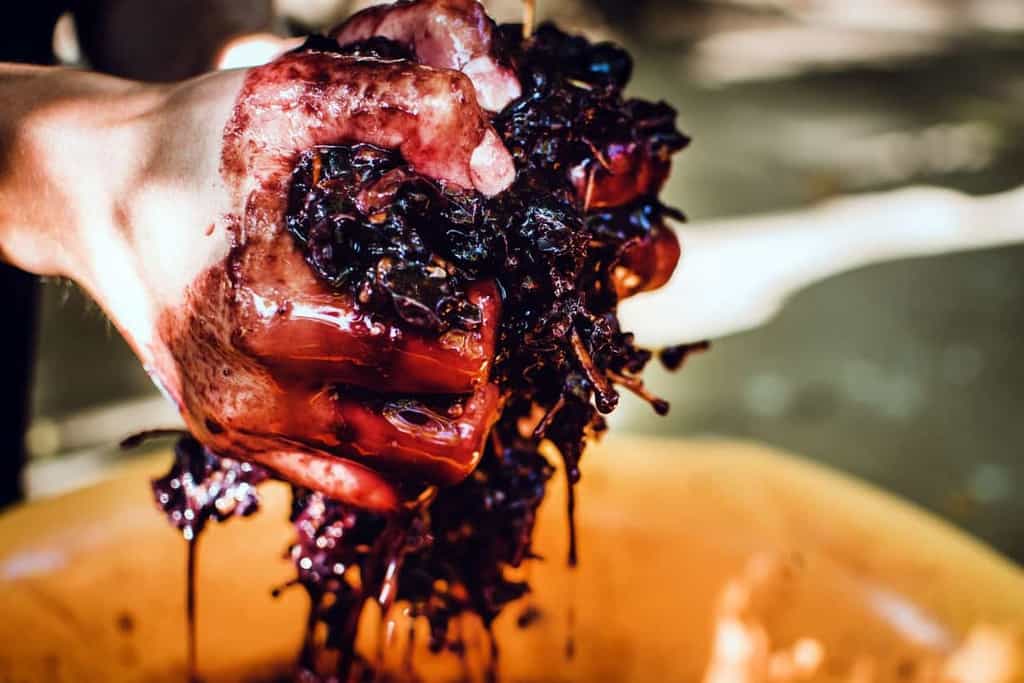
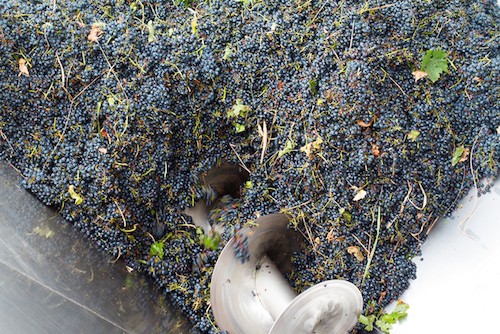
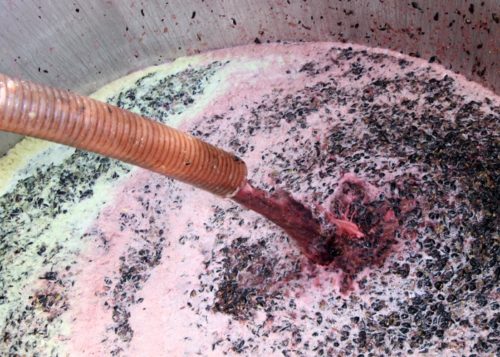
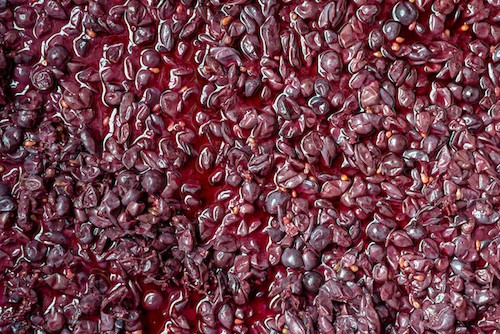
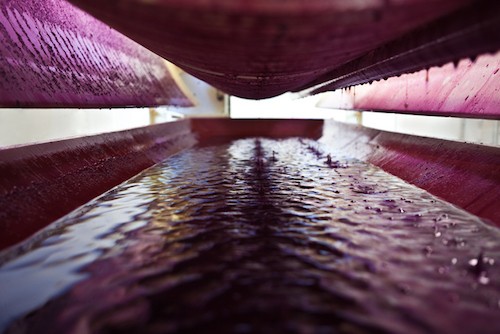
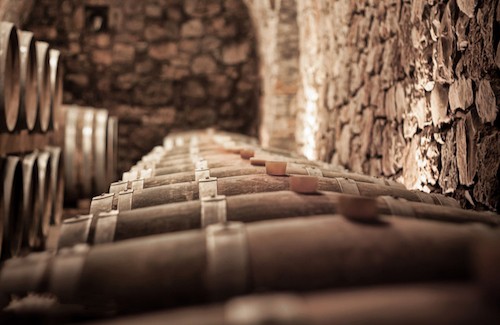
[…] Source […]